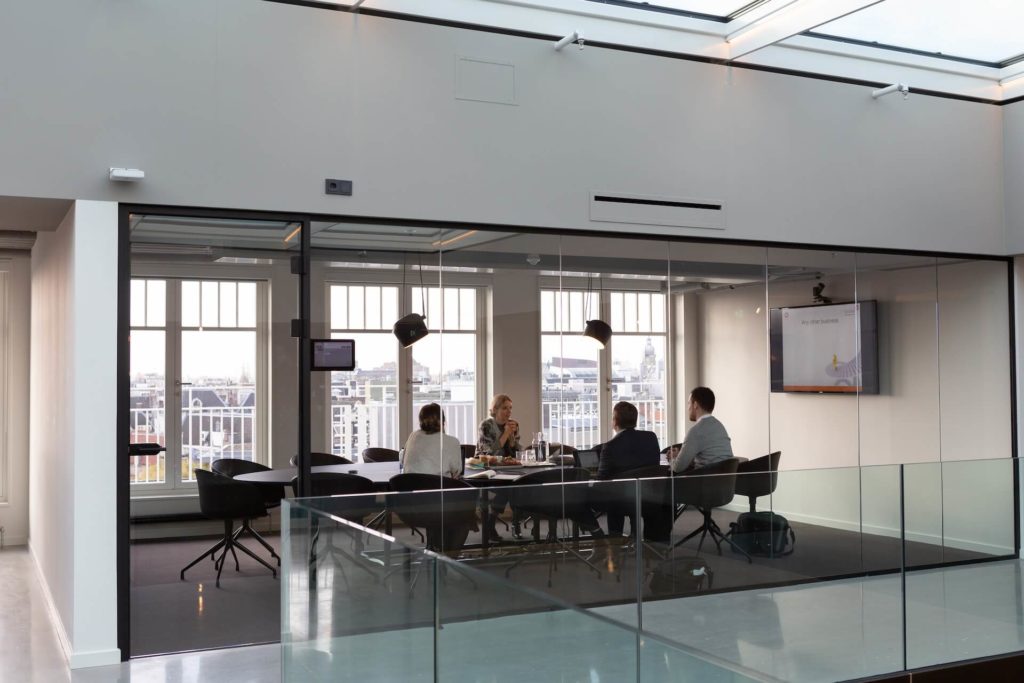how to avoid hiring the wrong employee
In today’s working environment, the talent acquisition landscape has become more complex than ever before. In less than two years, we have fluctuated from a period of mass hiring to the trend of quiet quitting, to widespread layoffs across the tech industry.
The resilience and success of tech companies rely, in large part, on their teams and their people – and that’s precisely why it’s so important to find and retain the right talent in our current climate. Making a bad hiring decision today can have significant implications tomorrow. In this article, we’ll talk about the implications of a bad hire on your business and will share with you some of the best practices and hiring processes to safeguard your company from them.
What does a “bad hire” even mean?
In broad terms, it’s someone who doesn’t have the right skill sets or whose attitude doesn’t fit with the company’s values.
Within these parameters, there are dozens of nuances. Maybe they are a qualified candidate with stellar technical skills, but their soft skills are underdeveloped. Or maybe the candidates’ soft skills make them a wonderful person to work with but they are not fully aligned with the company’s mission.
What implications does hiring the wrong employee have on your business?
1. The financial burden
When a manager comes to the worrying conclusion that they hired the wrong person, the negative impact of this decision can be significant. The extent of this impact can vary depending on national labor laws and the type of position.
According to the U.S. Department of Labor, the average cost of a bad hiring decision is at least 30% of the person’s first year of earnings. The employer brand guru Jorgen Sundberg, author of The Undercover Recruiter goes further – estimating that it costs $240,000 to hire, then fire, a bad employee. This scenario recurs more than you think. Leadership IQ concludes that 46% of new hires prove to be a bad fit within the first 18 months and that 89% of these cases are due to an employee’s attitude not aligned with company culture, and not, as is commonly thought, a lack of technical skills.
2. The impact on reputation
Nowadays, social media allows everyone a look behind the curtains of pretty much any business. Job portals and communities such as Glassdoor, Kununu, and CareerBuilder allow employees, past and present, to give feedback on a given company. They can outline interview processes, evaluate company culture and leadership teams, and even give tips on how to stand out for an open position.
However, sometimes these reviews can be one-sided. For example, they might not give the complete picture as to why their interview or hire didn’t work out as expected. This can ultimately reduce the experience to a one-star rating from their perspective only, which can damage a company’s reputation as a fair and honest place to work, along with future chances of attracting top talent.
3. The crushing effect on employee morale
Losing a key member (or any member) in a team can have a significant impact on the well-being and morale of the rest of the group.
Employees covering the roles you need to fill are likely to take on an increased workload in the time it takes to hire someone new and onboard them. Not to mention the added stress if a new employee displays poor performance and does not relieve the burden of that work. Add to this the time-consuming process of finding a replacement and you can see why hiring the wrong employee can have lengthy negative effects on workplace balance and productivity.

How to avoid the costs of hiring the wrong employee
Most managers can recognize a bad hire fairly quickly, alerted by their own observations or by a team member. What is more difficult is understanding why it happened. How could an unsuitable candidate squeeze through the talent acquisition pipeline? And what can be done to avoid it? To answer this question, we caught up with TravelPerk’s Chief Operations Officer, Huw Slater, to dig into developing the right strategy to ensure you hire the right people. Here’s what he said:
4 Tips on hiring the right people from TravelPerk’s COO Huw Slater
At TravelPerk, we have a unique workplace culture. The bedrock of our company is a strong community, where every member shares a vision for creating outstanding experiences and services for our customers. Together, we work efficiently to achieve that goal.
Crafting our community didn’t happen by accident, but rather with a methodical, human-centric approach to recruiting and onboarding our employees. Our human resources managers do an incredible job of playing ‘cupid’ and strategically sourcing the right talent as our business scales up. It’s not all about ‘chemistry’ – though that helps too! We follow some basic rules and processes to prevent the emotional and financial costs of hiring the wrong person. Here’s how you can apply that same methodology to finding the right fit and reducing employee turnover:
1. Make sure the job description is accurate and up to date
Writing an accurate and engaging job description is the foundation for finding the right candidate. It sets your bottom line and outlines key responsibilities and capabilities that a potential new co-worker will have.
If you’re not the Hiring Manager yourself, make sure you sit down with them, the Recruiter, and HRBP to really understand the requirements for this role. To write the best job description, don’t forget to include the main details, like what responsibilities the position would entail, the soft and hard skills needed for success, and a brief explanation of what’s in it for the candidate. Remember, hiring is a two-way street – a job description is also an opportunity for you to woo (or wow!) a candidate, so show them what’s best about your company!

2. Test to make sure a potential candidate believes in your vision and matches your culture
When it comes to hiring the right person for your team, ensuring that they believe in your vision is essential. If they don’t believe in your “why”, then no matter how qualified they are, they will struggle from day one and likely churn within a matter of months. Your hiring managers and everyone involved in the recruitment process (from conducting interviews to assessing tasks) need to feel confident that this person is eager to do what it takes to help your company win.
Company culture within the context of hiring means assessing whether the candidate is aligned with both your company’s values and way of working. The environment within which they work needs to bring out the best in them – and it’s unreasonable to expect that the candidate and your culture will mold to fit each other. It’s the same when looking at values. The candidate either fits your values, or they don’t. It’s that simple.
If you’re struggling to figure that out in a potential candidate, then think about reversing the framework. Ask yourself – have there been any red flags so far that indicate that this person has acted in a way that doesn’t suit your values? Is there anything to indicate that the way they work isn’t aligned with how your company works?
Let me illustrate that with an example from our own company. TravelPerk’s mission is to connect people in real life in an enjoyable and sustainable way. We look for people who both share this vision and are aligned with the ways we strive to reach it. Here’s what we look for:
- Ownership – we set the direction and expect people to use their skills to achieve company goals. This has been particularly crucial in the post-pandemic era, as our managerial structure has become more hybrid and location-independent.
- Working as a Team – even if the task at hand is carried out alone, we expect the person to keep others informed of developments. We need people to work with velocity (the right combination of speed and focus), while not discounting quality.

3. Don’t forget to keep a scorecard!
According to the ‘Who’ method for hiring, which we follow at TravelPerk, developing a scorecard is the most accurate way to clearly define the perfect candidate and the different competencies for the job. This is also where you’ll evaluate an important facto – growth potential.
Thinking about this early at the interview stage is necessary for sustainable recruiting. You need to ensure that the people you hire have the ability and desire to learn and grow with you. As your company scales, so should your people. The person you decide to hire should show the potential to be self-motivated enough not just to keep up with the pace your company is accelerating, but to be an integral part of keeping that engine running.
What’s more, as your organization grows, the nature of the role a person has been hired for is likely to change. That’s a normal part of a scaling company. For example, let’s say that your company hired George, a young accountant, 5 years ago when you were only present in one market.
As you scale, George’s role has changed to manage entities across 5 different markets. Sure, the essence of what George does is the same – he’s an accountant. But his role has naturally evolved with the company. Whether you’re a large or small business, this is an inevitable fact. The people you hire need to be adaptable.
4. Always debrief and look at the data you have collated
Between the interview questions, the background checks, the assessment projects, and the cultural fit interviews, you end up gathering quite a lot of information. That’s why you need to create time for everyone involved in the process to come together and discuss the feedback and results of the scorecards created at each step of the interview process.
Making a decision based on the face value of an obviously high or low result on your scorecard is rather straightforward. But even so, it’s really important to create context for the hiring decision. Start by thinking about the candidate’s current skills and growth potential and match that to the team’s needs. That’s something you can figure out by looking at the broader environment surrounding this role. For example, if the candidate is joining a high-performing team of experienced professionals, maybe they don’t need to nail everything from day one. So, factoring in a ramp-up period for this person shouldn’t work against them within this context.
However, in a different type of team, this new joiner might need to hit the ground running and build a critical output. In that situation, a ramp-up period would be a disadvantage as the requirements of the team wouldn’t be met right off the bat.
As you can see, it’s not only about what the candidate can bring to the table, but also the circumstances at that table itself. Situating the candidate within the context of the team is essential to understanding whether they’d be the right fit and have a lasting impact.
And finally…
Sometimes it takes a good amount of time to find the best candidate, and that can put a lot of pressure on you and your teams. At worst, it can prompt the Hiring Manager to make a bad hiring decision, triggering a damaging situation and high recruitment costs.
Despite the enticing prospect of relieving the workload for your teams, do not lower your expectations. Seek alternatives that will lead to similar results and will provide some flexibility until you truly find the “perfect” candidate.
It’s important never to compromise on your recruitment processes – they should represent your guiding compass in building the right team. Hiring the right people is an integral step toward nurturing your company culture and creating effective teams that will help you achieve, and even exceed, your goals.
